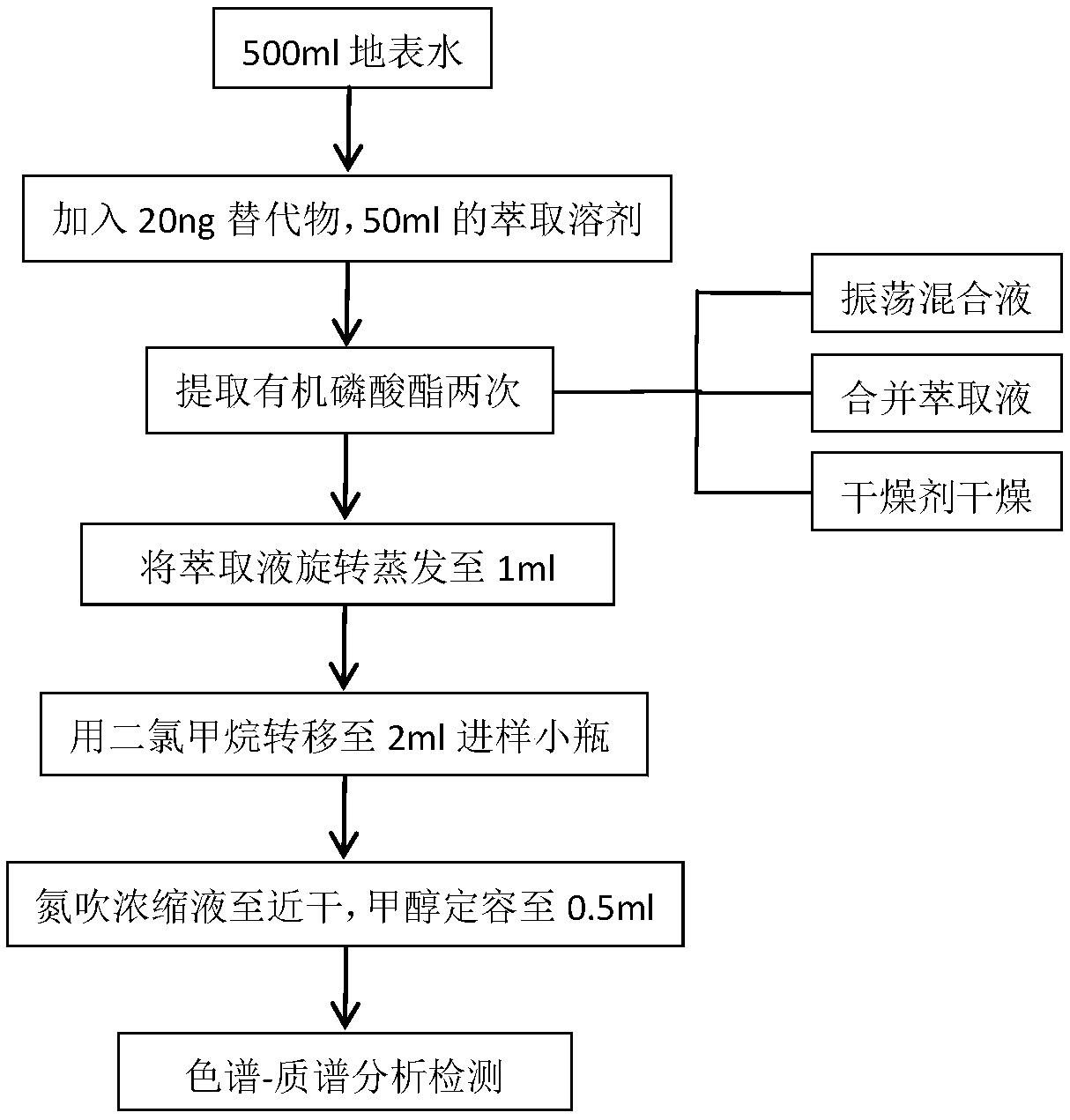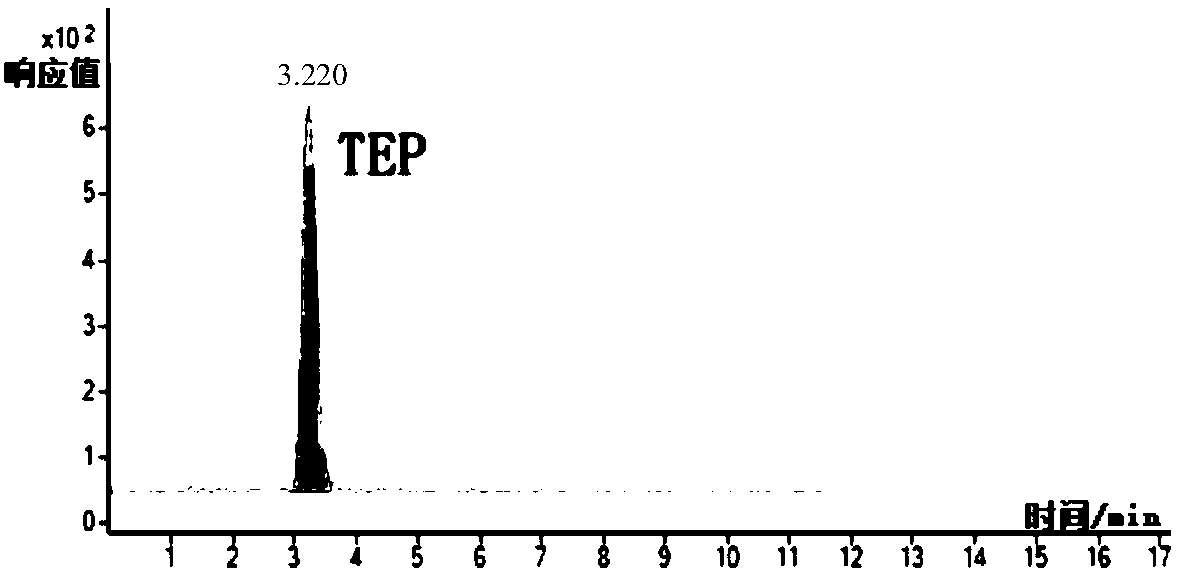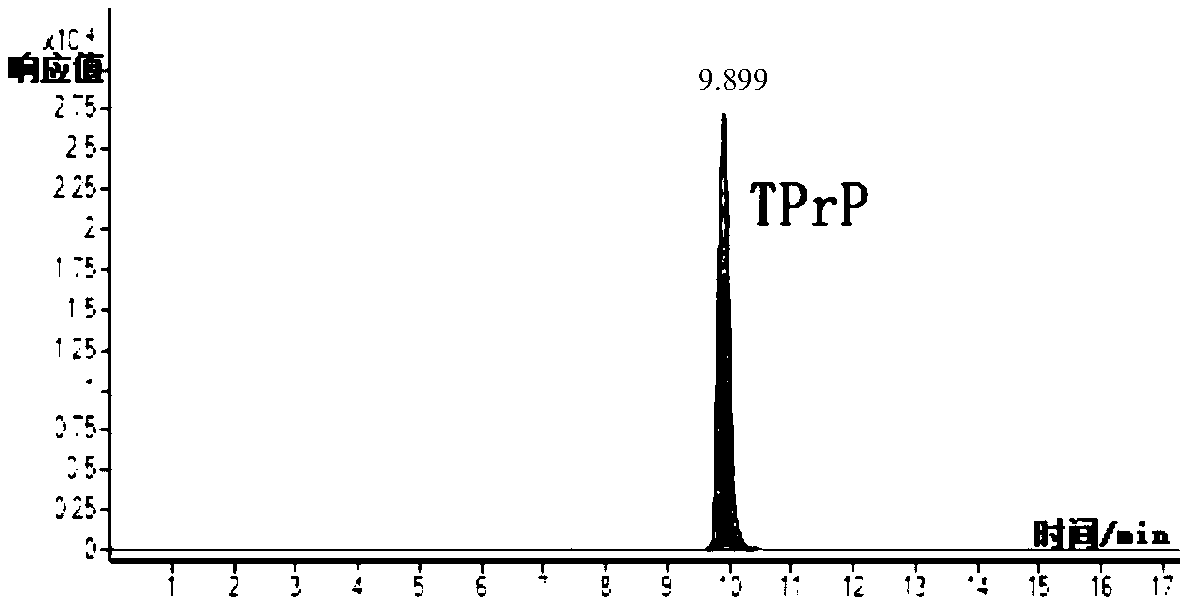Method for determining various organic phosphates in surface water by ultra performance liquid chromatography-mass spectrometry
An ultra-high performance liquid phase, organic phosphate technology, applied in measurement devices, instruments, scientific instruments, etc., can solve the problems of low-mass ions interference, poor sensitivity and selectivity, and few types of organic phosphates, to improve sensitivity and selection. stability, good selectivity and sensitivity, the effect of a wide range of polarity options
- Summary
- Abstract
- Description
- Claims
- Application Information
AI Technical Summary
Problems solved by technology
Method used
Image
Examples
Embodiment 1
[0067] The present invention is used to analyze the organophosphate in the main stream of the Haihe River in Tianjin.
[0068] 1. Prepare standard working fluid:
[0069] (a) Use a 10 μL micropipette to draw 10 μL of triethyl phosphate TEP, tri-n-propyl phosphate TPRP, tri-n-butyl phosphate TnBP, tri-isooctyl phosphate TEHP, and triphenyl phosphate at a concentration of 100 mg / L. TPhP, tricresyl phosphate TCrP, tris(2-ethylhexyldiphenyl) phosphate EHDPP, tris(butoxyethyl) phosphate TBEP, tris(2-chloroethyl) phosphate TCEP, tris(2-ethylhexyl diphenyl) phosphate 2-Chloropropyl) ester TCPP and tris(1,3-dichloroisopropyl) phosphate TDCPP standard stock solutions, drop them into a 2ml chromatography bottle and mix, then add 890μL of methanol to the 2ml chromatography bottle, and shake Obtain 1ml of 1mg / L standard mixed working solution;
[0070] (b) Use a micropipette to pipette 0.5μL, 1μL, 2μL, 5μL, 10μL, 20μL, 50μL, 200μL, 500μL of the 1mg / L standard mixed working solution to obtain n...
Embodiment 2
[0081] Example 2 Method blank value and blank recovery experiment.
[0082] 1. Prepare standard working fluid:
[0083] (a) Use a 10 μL micropipette to draw 10 μL of triethyl phosphate TEP, tri-n-propyl phosphate TPRP, tri-n-butyl phosphate TnBP, tri-isooctyl phosphate TEHP, and triphenyl phosphate at a concentration of 100 mg / L. TPhP, tricresyl phosphate TCrP, tris(2-ethylhexyldiphenyl) phosphate EHDPP, tris(butoxyethyl) phosphate TBEP, tris(2-chloroethyl) phosphate TCEP, tris(2-ethylhexyl diphenyl) phosphate 2-Chloropropyl) ester TCPP and tris(1,3-dichloroisopropyl) phosphate TDCPP standard stock solutions, drop them into a 2ml chromatography bottle and mix, then add 890μL of methanol to the 2ml chromatography bottle, and shake Obtain 1ml of 1mg / L standard mixed working solution;
[0084] (b) Use a micropipette to pipette 0.5μL, 1μL, 2μL, 5μL, 10μL, 20μL, 50μL, 200μL, 500μL of the 1mg / L standard mixed working solution to obtain nine kinds of volume standard mixed working solution...
PUM
 Login to View More
Login to View More Abstract
Description
Claims
Application Information
 Login to View More
Login to View More - R&D
- Intellectual Property
- Life Sciences
- Materials
- Tech Scout
- Unparalleled Data Quality
- Higher Quality Content
- 60% Fewer Hallucinations
Browse by: Latest US Patents, China's latest patents, Technical Efficacy Thesaurus, Application Domain, Technology Topic, Popular Technical Reports.
© 2025 PatSnap. All rights reserved.Legal|Privacy policy|Modern Slavery Act Transparency Statement|Sitemap|About US| Contact US: help@patsnap.com



